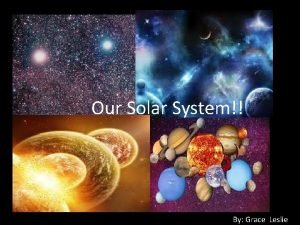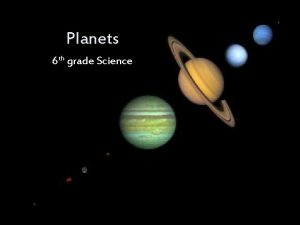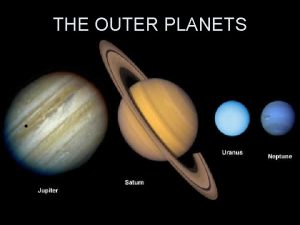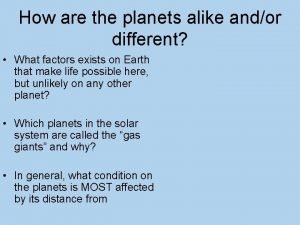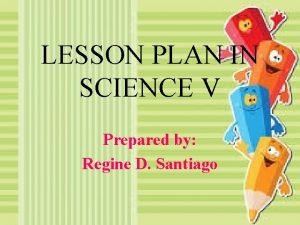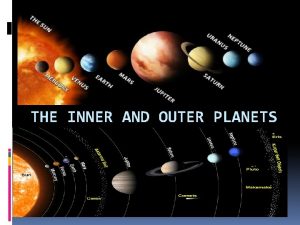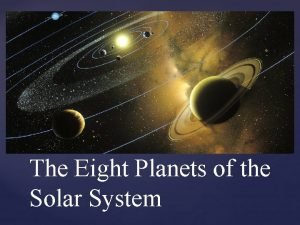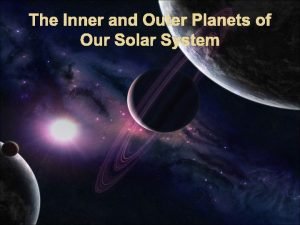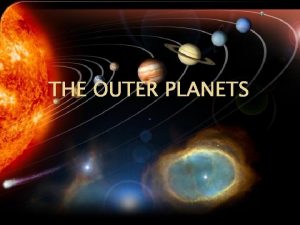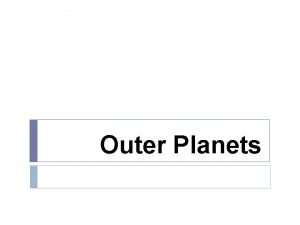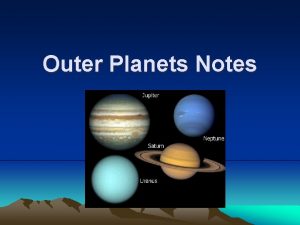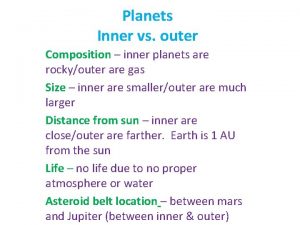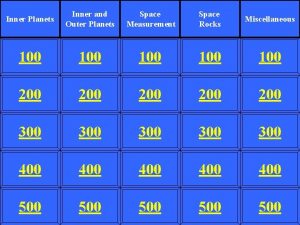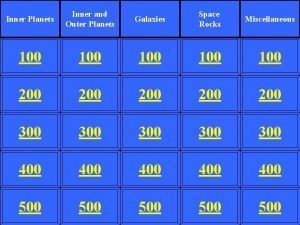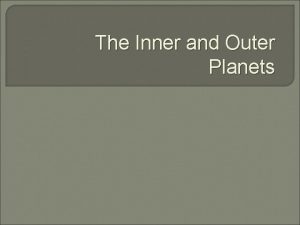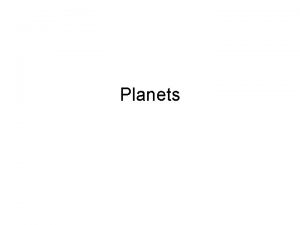Inner vs Outer Planets Inner planets are spaced










- Slides: 10

Inner vs. Outer Planets Inner planets are spaced more closely than outer planets Gas giants tend to have a massive atmosphere compared to the inner planets Astronomical unit is the average distance between Earth and the Sun (8. 3 lights minutes)

Mercury • Closest to the Sun • 88 Earth days or 1. 5 Mercurian days is one year/one revolution around sun, but has a slow rotation.

Venus • High Temperature the greenhouse effect of the dense atmosphere of carbon dioxide

Earth • One of the major factors that makes life possible on Earth is that it has liquid water on the surface • 3 rd planet from the sun

Mars • Thin atmosphere and cold. • Water may have existed on the surface at one time when the atmosphere was thicker. Also has volcanoes.

Jupiter • Largest, gaseous planet made up of mostly Hydrogen and Helium. • Very hot with a great red spot that may be a massive storm system

Saturn • Has largest rings of the gaseous giants • Rings made up of icy materials

Uranus • Titled almost 90 degree during the rotation • Blue green color due to gases hydrogen and methane that made up the composition of the planet

Neptune • Belts of clouds that allow the planet to be visible caused by the release of energy to its outer layers

Pluto • Dwarf “Planet” has a thin atmosphere of methane made up of rock and ice. • Small and crosses orbit of Neptune so currently not considered a “planet”
 What separates the inner planets and outer planets
What separates the inner planets and outer planets Inner terrestrial planets
Inner terrestrial planets What separates inner and outer planets
What separates inner and outer planets What do the first four outer planets have in common?
What do the first four outer planets have in common? Andor planet
Andor planet Inner outer planets venn diagram
Inner outer planets venn diagram What separates the inner and outer planets
What separates the inner and outer planets My very excited mother planets
My very excited mother planets Solar system planets
Solar system planets Insidan region jh
Insidan region jh By listening to my inner defender voice i can be sure that
By listening to my inner defender voice i can be sure that
